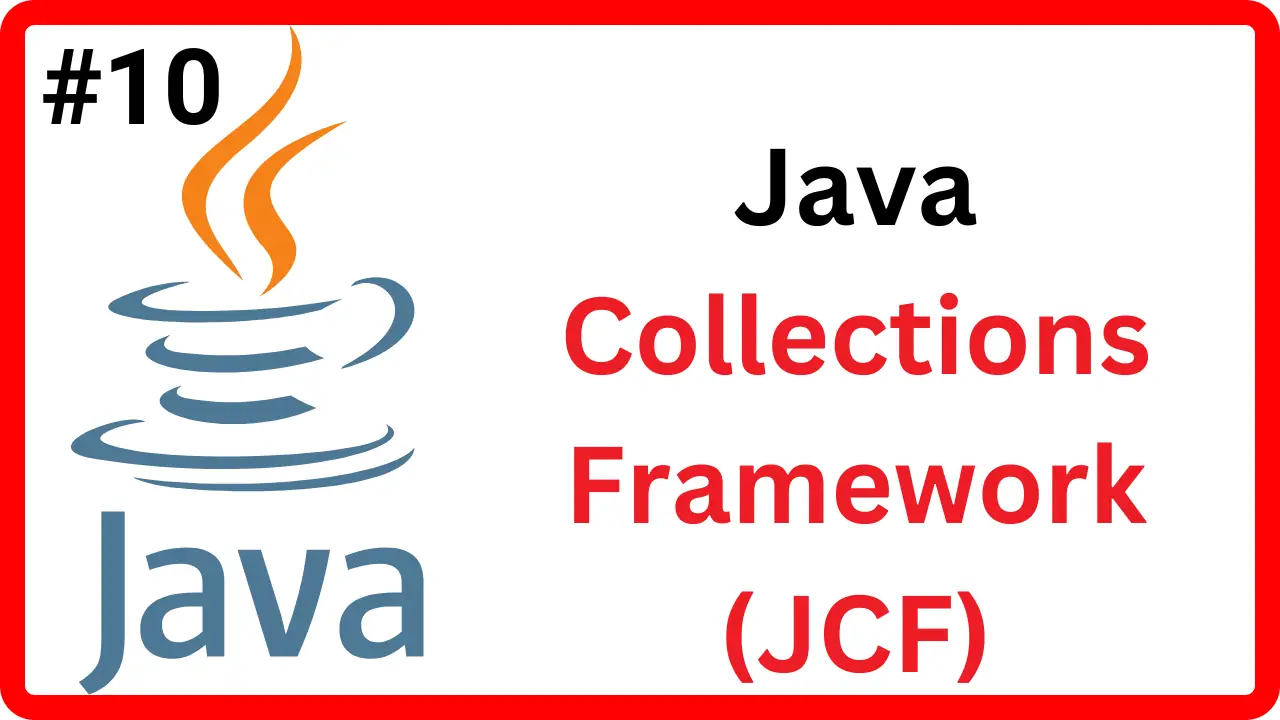📘 Module 10: Java Collections Framework (JCF)
🔷 1. Java Collections Framework क्या है?
📌 Definition:
Java Collections Framework (JCF) एक architecture है जो हमें objects को group करने, manage करने और उन पर operations करने की सुविधा देता है — जैसे list, set, map, आदि।
👉 इसे आप “Objects की दुनिया के लिए Array की upgraded version” कह सकते हैं।
🔎 क्यों ज़रूरी है?
| कारण | Explanation |
|---|---|
| Static array की limitation | fixed size, fixed type |
| Real-world में dynamic data आता है | students, products, files, आदि |
| हमें search, sort, remove जैसे operation जल्दी और efficiently करने होते हैं |
✅ 2. Collections का टॉप लेवल Structure
📦 Main Interfaces:
java.util.Collection
├── List
├── Set
└── Queue
java.util.Map (Not part of Collection interface, but part of framework)
📊 Hierarchy Diagram (Text-based):
Collection (Interface)
/ | \
List Set Queue
| | |
ArrayList HashSet PriorityQueue
LinkedList LinkedHashSet
Vector TreeSet
Map (Interface)
|
HashMap
LinkedHashMap
TreeMap
🔷 3. List Interface (Ordered, Duplicates Allowed)
| Class | Use |
|---|---|
ArrayList | Fast access, dynamic array |
LinkedList | Fast insertion/deletion |
Vector | Thread-safe (legacy) |
List<String> list = new ArrayList<>();
list.add("A");
list.add("B");
System.out.println(list.get(0)); // Output: A
🔷 4. Set Interface (No Duplicates Allowed)
| Class | Use |
|---|---|
HashSet | Fast, no order |
LinkedHashSet | Maintains insertion order |
TreeSet | Sorted set |
Set<Integer> set = new HashSet<>();
set.add(10);
set.add(20);
set.add(10); // Duplicate, won't be added
🔷 5. Map Interface (Key-Value Pair)
| Class | Use |
|---|---|
HashMap | Fast, no order |
LinkedHashMap | Maintains insertion order |
TreeMap | Sorted keys |
Map<String, Integer> map = new HashMap<>();
map.put("A", 100);
map.put("B", 200);
System.out.println(map.get("A")); // Output: 100
🛠 Common Methods:
| Collection Method | Description |
|---|---|
add() | Add element |
remove() | Remove element |
contains() | Check if element exists |
size() | Number of elements |
clear() | Remove all elements |
isEmpty() | Check if collection is empty |
get(index) | For List only |
🧠 Important Concepts:
🔹 Generics:
List<String> names = new ArrayList<>();
🔹 Iteration:
for (String item : list) {
System.out.println(item);
}
Iterator<Integer> it = set.iterator();
while (it.hasNext()) {
System.out.println(it.next());
}
🧾 Summary Table:
| Interface | Class | Order Maintained? | Allows Duplicates? |
|---|---|---|---|
| List | ArrayList | ✅ Yes | ✅ Yes |
| Set | HashSet | ❌ No | ❌ No |
| Map | HashMap | ❌ No | ❌ (Only unique keys) |
🧪 Practice Assignments:
- एक
ArrayListमें 5 names जोड़िए और alphabetically sort कीजिए - एक
HashSetबनाइए और देखें duplicate add होने पर क्या होता है - एक
HashMapबनाइए जिसमें Student Name को Roll Number से map करें - एक
LinkedHashMapबनाइए और उसे iteration के साथ print करें
📘 Interview Questions:
- List vs Set में क्या फ़र्क है?
- HashMap और TreeMap में क्या अंतर है?
- ArrayList और LinkedList में कौन fast है और कब use करें?
- Collection vs Collections (class vs interface) में क्या अंतर है?

Comments